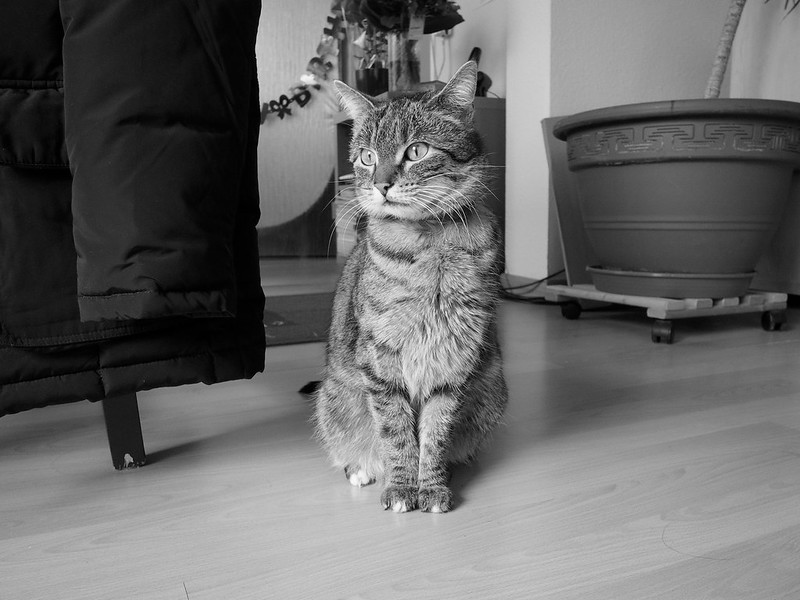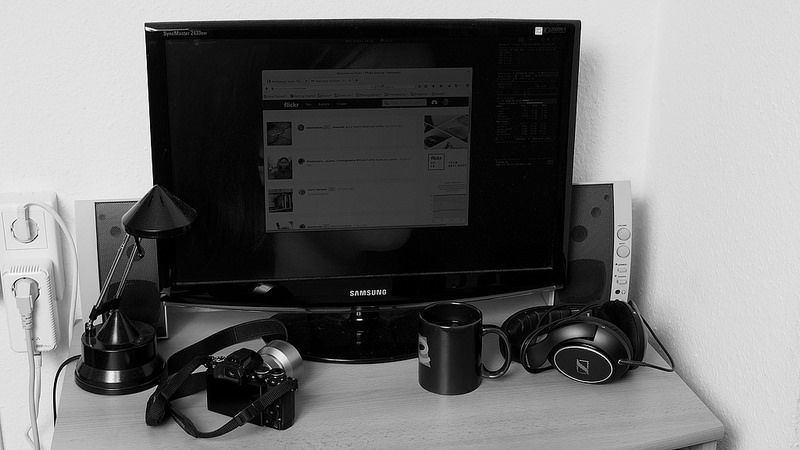Here’s a photo from Tuna from this morning. First one with “monotone” conversion, like Olympus calls it, by the Olympus Viewer 3 software – which does the same like when you set the camera to black & white directly:
Tuna the cat, February 2016 (out of camera)
For the second one I used RawTherapee’s channel mixer on default settings:
Tuna the cat, February 2016 (channel mixer)
And the third conversion was done with using the luminance equalizer, also with RawTherapee:
Tuna the cat, February 2016 (luminance equalizer)
As you can see, the out of camera black & white and the one where I used the luminance equalizer are almost identical, so this is how Olympus does it in camera. If you do it in RawTherapee you can still fine-tune some settings, but as a starting point they’re both pretty close.
The channel mixer – with its default settings, more to that in another blog post – treats at least the blue channel differently, see my dark blue jacket on the chair, or the small carpet behind the cat (or the letter “R” of the “Happy birthday” in the background). Here you can adjust each of the colour channels separately and simulate different black & white films (I guess – but still have to check – if the also “canned” film simulations do the same with adjusting those channels only). I’ll test that later.
In the Gimp, there’s that very interesting GEGL C2G conversion. But with using Debian stable, I’m also still using the Gimp in version 2.8.x (also stable), and only the current developer version (2.9.x) uses more than 8 bits for each colour, so tests with that have to wait (I guess the jump will be as big as the one if you go from Photoshop Express to the real big – and expensive – version).
The photos you see on the internet are all 8 bits per channel only, since standard RGB jpg files are 8 bits, compressed. But it’s still a big difference for printing and also if you work with other colour spaces on a calibrated monitor (the best of which are 10 bits / channel).
Anyway. Before I get too technical, remember that it’s the *content* of the photo which counts.
Thanks for reading.













